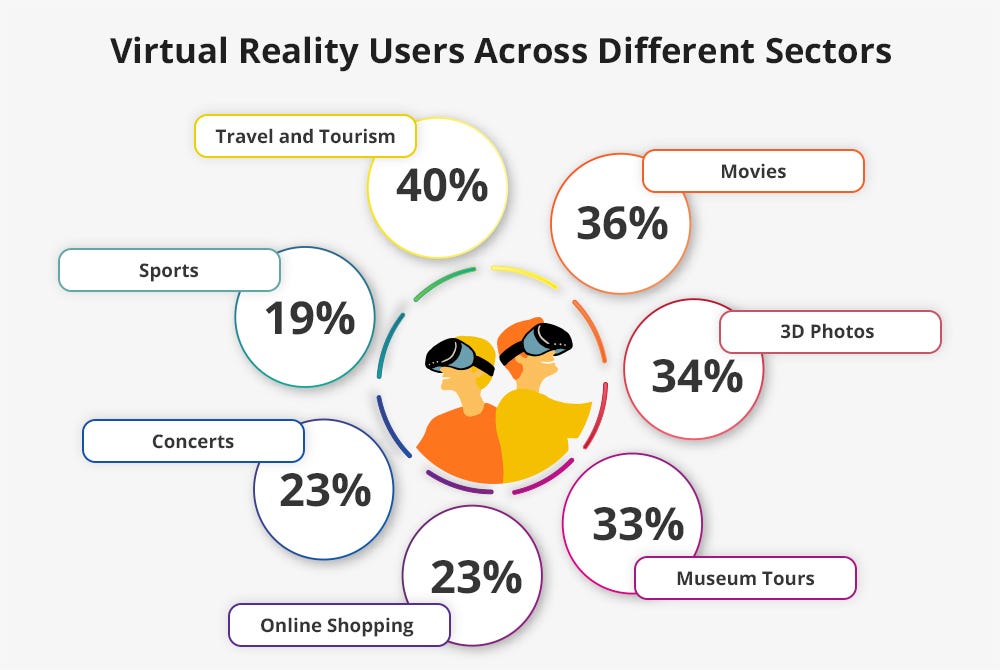Virtual Reality (VR) technology has long been associated with entertainment, offering immersive experiences in gaming, virtual tours, and cinematic adventures. However, the scope of VR extends far beyond entertainment, encompassing a wide range of practical applications that are revolutionizing various industries. In this article, we delve into the world of practical VR applications and explore how this transformative technology is reshaping fields beyond mere entertainment.
Table of Contents
Introduction to Virtual Reality (VR)
Before delving into practical applications, it’s crucial to understand what VR entails. Virtual Reality is a computer-generated simulation of an environment that can be interacted with in a seemingly real or physical way by a person using special electronic equipment, such as a helmet with a screen inside or gloves fitted with sensors. VR technology aims to create a sensory experience that can immerse users in a simulated reality, often with the aid of audio and visual stimuli.
Entertainment Applications of VR
While entertainment remains a primary use case for VR, it’s essential to highlight its significance before exploring practical applications. Gaming stands as one of the most prominent areas, where VR transports players into fully immersive virtual worlds, offering unparalleled gaming experiences. Additionally, VR facilitates virtual tours, allowing users to explore distant locales or historical sites from the comfort of their homes. Cinematic experiences, too, have been enhanced by VR, offering viewers a sense of presence within the narrative.

Beyond Entertainment: Practical VR Applications
Training and Education
VR holds immense potential in training and education, providing realistic simulations for various scenarios. From medical students practicing surgeries to pilots honing their skills in flight simulators, VR offers a safe and cost-effective way to train individuals in high-risk or complex environments.
Healthcare and Therapy
In healthcare, VR is revolutionizing patient care and therapy. It’s being used for pain management, exposure therapy for phobias, and even as a tool for physical rehabilitation. VR environments can be tailored to meet the specific needs of patients, offering personalized treatment experiences.
Architecture and Design
Architects and designers are leveraging VR to visualize and prototype projects in a more immersive manner. Clients can explore virtual architectural models, providing valuable feedback before construction begins. This technology streamlines the design process and enhances communication between stakeholders.
Virtual Meetings and Collaboration
With the rise of remote work, VR offers a solution for virtual meetings and collaboration. Teams can meet in virtual environments, fostering a sense of presence and enhancing communication and collaboration. VR meetings can mimic real-world interactions, making remote work more engaging and effective.
Tourism
VR is transforming the tourism industry by offering virtual travel experiences. Users can explore destinations worldwide without leaving their homes, providing a glimpse into different cultures and attractions. Virtual tourism also benefits travelers by helping them plan their trips more effectively.
Military and Defense
In the military and defense sector, VR is used for training, simulation, and strategic planning. Soldiers can undergo realistic combat simulations, preparing them for various scenarios they may encounter in the field. VR technology also aids in mission planning and tactical decision-making.
Challenges and Limitations
Despite its potential, VR technology still faces challenges and limitations. Issues such as motion sickness, high costs, and technical limitations continue to hinder widespread adoption. Additionally, the ethical implications of VR, such as privacy concerns and psychological effects, require careful consideration.
Future Outlook
Looking ahead, the future of VR appears promising, with ongoing advancements in technology and increasing adoption across industries. As VR hardware becomes more affordable and accessible, we can expect to see even more innovative applications emerge, further blurring the line between virtual and reality.
Conclusion
In conclusion, while entertainment remains a significant aspect of VR technology, its practical applications are far-reaching and transformative. From revolutionizing training and education to enhancing healthcare and design, VR is reshaping industries and improving lives. As technology continues to evolve, the potential for VR to revolutionize our world is virtually limitless.
FAQs
- How does VR technology benefit the healthcare industry?VR technology benefits the healthcare industry by providing realistic simulations for training, aiding in patient therapy and rehabilitation, and offering innovative solutions for pain management.
- Is VR suitable for educational purposes?Yes, VR is highly suitable for educational purposes, offering immersive simulations for various subjects and scenarios. It enhances learning experiences by providing hands-on, interactive environments.
- What challenges does VR technology face?VR technology faces challenges such as motion sickness, high costs, technical limitations, and ethical concerns regarding privacy and psychological effects.
- How is VR transforming the tourism industry?VR is transforming the tourism industry by offering virtual travel experiences, allowing users to explore destinations worldwide without leaving their homes. It helps travelers plan their trips more effectively and provides a glimpse into different cultures and attractions.
- What does the future hold for VR technology?The future of VR technology looks promising, with ongoing advancements in technology and increasing adoption across industries. As VR hardware becomes more affordable and accessible, we can expect to see even more innovative applications emerge.







